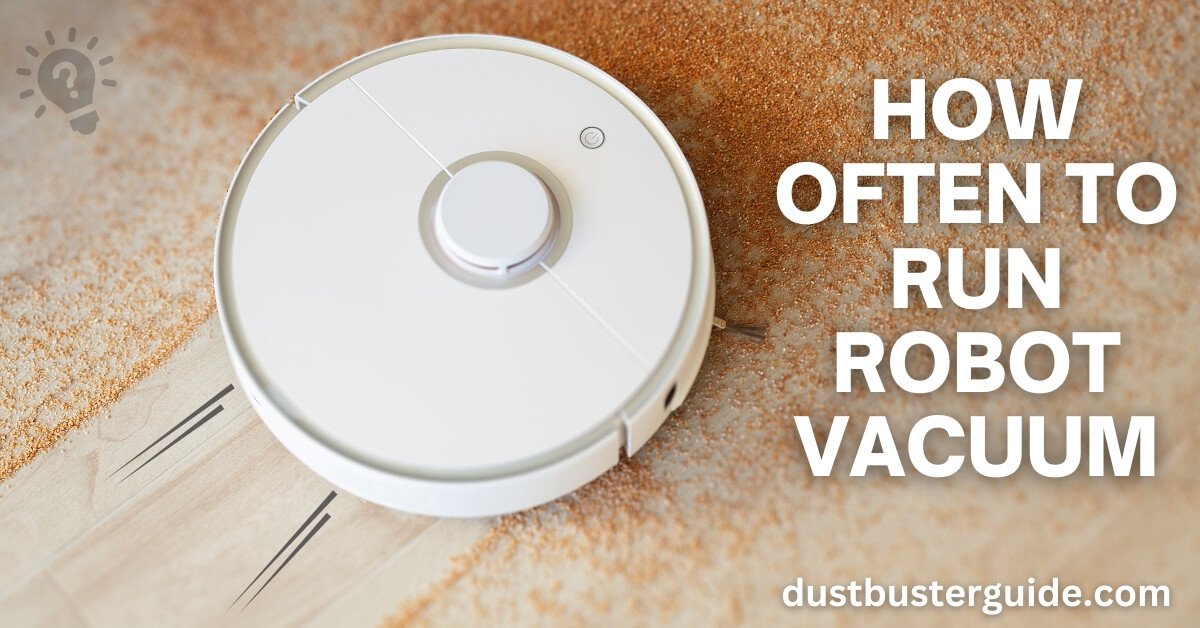Contemplating the ideal routine for your trusty robotic cleaner and wondering, how often to run robot vacuum? Today, we’re navigating the automated cleaning schedule. Picture this: a robot at your service, but when should it hit the floor? The recommended frequency to run a robot vacuum depends on factors like your home’s size, foot traffic, and pet presence.
In general, a few times a week is often sufficient for maintenance cleaning. We’re about to explore the balance between keeping your space consistently tidy and preventing unnecessary wear on your robotic helper. Join us on this journey to find the sweet spot in the choreography of robotic cleaning, ensuring your floors stay effortlessly spotless!
How Often Should I Run My Robot Vacuum?
Most owners think vacuuming the floors with their robot vacuums four times per week is enough to keep them free of dust. However, you should use your robot vacuum more frequently if you have kids or pets. You should vacuum every day if you suffer from seasonal allergies. A workaholic can use a robot vacuum less frequently and prefers to spend most of his time at the office.
As you can see, just as we indicated in the introduction to this article, your lifestyle will have a significant impact on how frequently you use your robot vacuum. Below, we’ve outlined several circumstances and offered advice on how to schedule your robot vacuum. So let’s explore further:
7 Factors That Help Determine The Schedule Of Your Robot Vacuum
After providing a concise summary in response to your query, how often to run robot vacuum, let’s move on to the most significant and instructive section of our article.
The most crucial thing to do is to consider specific conditions that affect how frequently you vacuum before operating your robot vacuum and setting it up for scheduling. We have listed them below:
- Size of your home
- Shedding pets
- Children
- No. of people living in your home
- Your family members’ health
- Other environmental concerns
Size of Your Home
Before creating a timetable for your robot vacuuming, this is one of the most crucial things to take into account. A larger home will naturally become dirty more quickly. Due to this, larger homes require more regular vacuuming (every day of the week) than smaller homes (4 times a week).
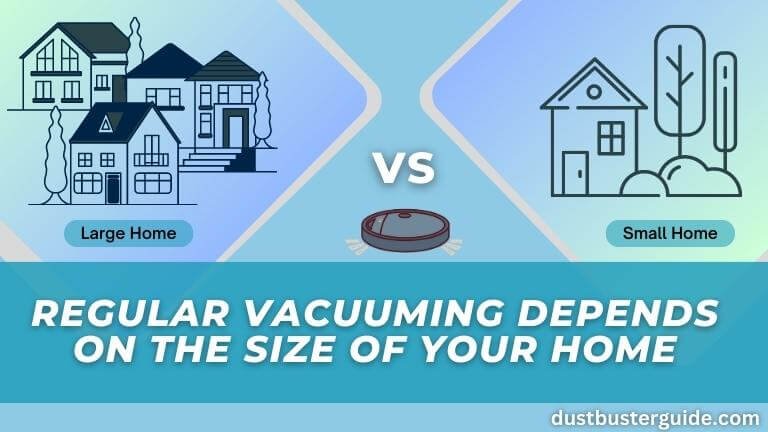
Shedding Pets
Who doesn’t love pets? Almost everyone in our circle would like to have a pet. But remember that choosing how regularly you vacuum will unquestionably depend on whether or not you have pets who shed. The benefit of a robot vacuum is that it may be programmed to operate seven days a week, concentrating on busy areas. Then, you may control pet hair and dander by routinely vacuuming in challenging locations like stairways, mudrooms, and entryways.

Children
Pay extra attention to high-traffic areas like the kitchen and main living spaces if you have kids or young adults living with you. Vacuum daily in these areas. 2-4 times a week, vacuum areas with moderate activity.
No. of People Living in Your Home
The number of people living in your home at any given time is another crucial issue; more people equals more dust and debris. In that situation, you should set a daily schedule for robot vacuuming.
Your Family Members’ Health
If someone in your household has a respiratory condition like asthma, you should always keep your home clean. Daily use of the robot vacuum will stop bacteria and allergens from circulating the house, reducing the likelihood of allergies.
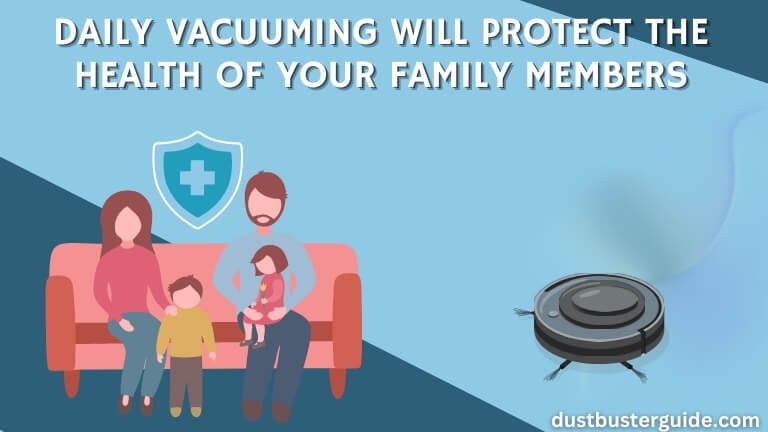
Other Environmental Concerns
You must use your robot vacuum more regularly if your area has greater pollution levels. For instance, you should allow your robot vacuum to run at least twice a week when neighboring development occurs. You only need a once-weekly cleaning if you reside in a suburb where the air is cleaner.
Other Important Things To Keep In Mind While Scheduling
Now that we’ve covered the factors you must consider when deciding how often you should run your robotic vacuuming, here are a few more things to consider before doing so. Here are they:
- To give the machine greater room to clean more effectively, you should only use your robot vacuum when the majority of the space in your home has been freed of heavier furniture.
- Additionally, consider that scheduling the vacuum’s timings during online meetings or when you have visitors over would not only seem unprofessional but also ruin the atmosphere of a gathering.
- Remember that some navigation robots need the lights to map out the space that must be cleaned while making plans and moving forward with a schedule. So plan your vacuuming accordingly.
Is It Bad To Vacuum Every Day
We have observed a rumor that everyday vacuuming can be harmful, and many people are curious whether this is true or not. So let’s tell you the truth:
There is no harm in using your robot vacuum daily if you feel the need to. Over time, scheduling daily robot vacuuming is advantageous for you and the cleanliness of your home, especially if you have a busy household.
Keeping your floors tidy requires the daily use of your robot vacuum. Additionally, we advise scheduling daily cleanings with your robotic vacuum rather than performing them manually. This way, you won’t have to remember to clean up the spill yourself with a vacuum cleaner if the kids unintentionally dropped biscuit crumbs or the dog or cat is shedding more hair than normal. It will be immediately dealt with.
Here we have listed just a few of the numerous advantages of routine vacuuming:
- You’ll spend less time washing the floors in general.
- Provides a cleaner, healthier living space by removing dirt, dander, and dust.
- Without you at home, a robot vacuum will still work, and many models allow for remote adjustments.
How Often To Run Robot Vacuum And How To Set Up Your Robot Vacuum
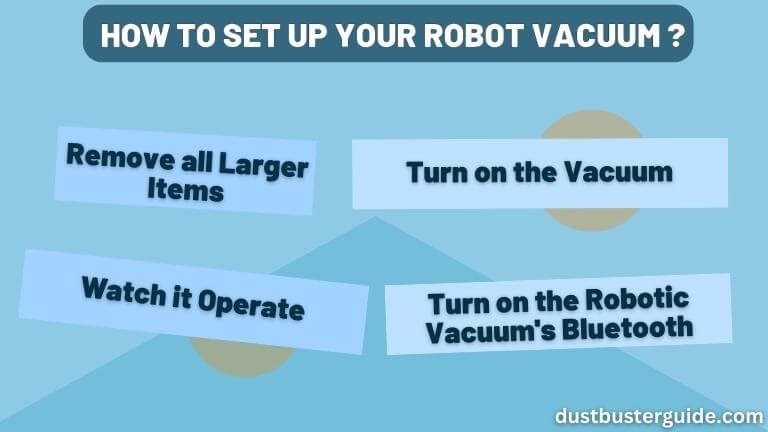
Now that you know how often to run robot vacuum and under what circumstances, We’ll tell you how to set up your robot vacuum so that it runs more efficiently. Yes! We have your attention, so let’s get right to it and not make you wait anymore:
- Before putting your vacuum up, remove all larger items, such as dining chairs and tables, and store them somewhere so that your automatic vacuum can clean beneath these surfaces more effectively.
- After that, please turn on the vacuum and watch it operate for a short while to have a general idea of how it functions and what other items need to be moved. Make sure the robot vacuum is completely charged before turning it on by pressing the clean button.
- Next, turn on the robotic vacuum’s bluetooth and connect it to your home’s wireless network. The gadget is successfully connected to the Wi-Fi if you see a green icon. Restart the robotic vacuum or the router if there is a problem with the Wi-Fi connection, and all this will resolve the issue in turn.
Robot Vacuum Maintenance Advice
Maintaining your robot vacuum’s efficient functioning is critical after learning how frequently to use it. We’ve also prepared a few suggestions that might be useful here:
Set A Schedule For Your Robot Vacuum
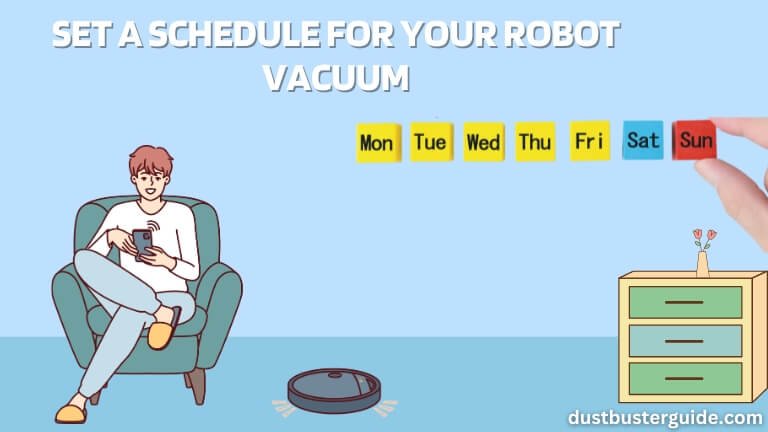
Most recent robot vacuums have scheduling capabilities that let you specify the days of the week and times that you want them to clean. The floors will always be immaculate when you arrive home, and the robot won’t annoy you because you can plan your vacuum for a time when you know you’ll be away from the house.
You should plan the area you need to clean and schedule the time. DEEBOT develops an interactive map that you have total control over with pride. Your smartphone serves as the command center for cleaning floors on your terms after mapping your home. See how much has been cleaned in real-time. Alternatively, on a rainy day, use custom settings to focus on areas that need special attention, like the kitchen after the kids “helped” prepare cookies or the area by the pet door.
Clear Cords And Curtains
The main brush of the robot vacuum may become tangled in cords and long drapes, forcing it to halt abruptly. Before sending your robot to clean, clear your floors of any phone chargers and other cables and tie up any long drapes to prevent these situations.
To make it simpler for your robot vacuum to collect crumbs under your dining room and kitchen table, think about flipping your chairs upside down on your table as restaurants do.
Do A Test Run
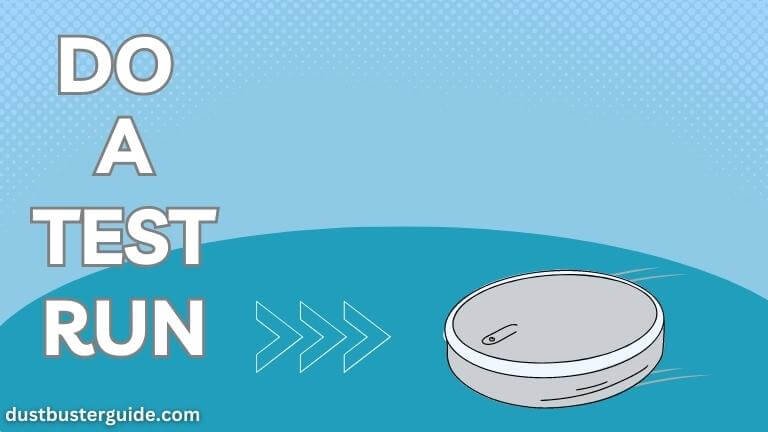
You must run a test. During this time, ensure your robot vacuum is properly programmed and address any problems. Like any new procedure, a test run will give you peace of mind that the vacuum will work the first time properly.
How Does A Robot Vacuum Know When It’s Done?
A robot vacuum determines when it’s done through a combination of sensors and programming. Many models operate based on a preset cleaning time, typically ranging from 60 to 120 minutes.
Advanced robot vacuums use mapping and navigation features, utilizing sensors and cameras to create a map of the cleaning area. These robots systematically cover the space and may return to the charging dock when they perceive that the entire area has been adequately cleaned.
Obstacle sensors, often using infrared or laser technology, help the vacuum detect walls and furniture, contributing to efficient navigation. Some robot vacuums are equipped with dirt sensors that assess the cleanliness of an area, and when a satisfactory level is reached, the vacuum may stop cleaning.
Additionally, monitoring the battery level is a common method; when the battery is low, the vacuum returns to its charging dock, considering its task complete. The effectiveness of these methods can vary between models, with advanced models often combining multiple techniques for optimal cleaning efficiency.
Quick Tips To Take Care Of Your Robot Vacuum
The following advice will help take care of your Robot vacuum:
- Before each run, empty the trash can.
- At least once every week, clean the brush rolls. Cleaning the brushes should be done twice a week if you have dogs.
- Wipe the robot’s docking station down twice a month with a moist towel.
- A thorough cleaning is also required for your Robot vacuum every three months.
- Update the software on your robot vacuum.
- It’s best to fully charge the battery and remove it from the vacuum before leaving it for an extended period to preserve its lifespan.
Conclusion
We hope you are fully aware of how often to run robot vacuum and can now advise anyone on this subject. How frequently you should use a robot vacuum depends on several variables, including your lifestyle, the size of your home, your work schedule, the number of inhabitants, and most importantly, the demands of your household.
People typically use robot vacuums a couple of times per week. Generally speaking, you should use your robot vacuum more often if you have kids or pets. On the other hand, less frequently should be sufficient if you’re rarely home and live alone.
FAQs
How long does it take for a robot vacuum to clean the room?
A 2000-square-foot room can be cleaned by a robot vacuum in anywhere from one to two hours, depending on the size of the space.
Can robotic vacuums clean up liquid or large food items from the floor?
Robot vacuums cannot equal the cleaning effectiveness or power of a traditional upright or canister vacuum; they perform admirably enough to warrant a position in a home.
Do robot vacuums clean as well as regular vacuums?
No, the vacuum cannot take up huge food items since doing so would cause it to malfunction. It also cannot pick up liquids because it is not designed to do so.
What is the life of a robotic vacuum cleaner?
Robot vacuums can endure for roughly four to six years with adequate maintenance, including brush cleaning and component replacement. For example, high-end models may have a longer lifespan.
How Often Does A Robot Vacuum Need To Be Emptied?
Robotic vacuums perform best when you clean and empty them every seven to ten days. The robot vacuum cleaner may require frequent emptying every 3 to 4 days if used for pet hair and other rigorous cleanings.
What is the recommended robot vacuum schedule?
A recommended robot vacuum schedule is typically 2-3 times per week, but it can vary based on factors like the size of the space, level of foot traffic, and personal preferences.
How does the robotic vacuum know where to go?
Robotic vacuums use sensors and navigation technology, such as infrared sensors, lasers, and cameras, to detect obstacles, map the environment, and navigate through a space. Some advanced models also utilize smart mapping technology for more efficient cleaning routes.
External Resources
- The Life And Death Of A Robot Vacuum – TechCrunch
Smart Vacuum Cleaner – ScienceDirect - Lessons Learned From Robotic Vacuum Cleaners Entering In The Home Ecosystem – ResearchGate
- Development Of Intelligent Floor Cleaning Robot – Institute of Physics
- Rogue Robotic Vacuum Cleaner Causes $3.5k Worth Of Damage, Tribunal Hears – New Zeland Herald

